Safe Seafood and Omega-3s
Seafood is a great source of healthy omega-3 fatty acids. Before learning how to find safe seafood it is important to understand why omega-3s are so important to your health.
Not all omega-3 essential fatty acids are created equal. Omega-3 molecules vary in length, behave differently within the body and come from different sources, some of which are controversial.
The number of carbons determine how long each omega 3 is and how it behaves biochemically in the body. The omega-3s found in plants, such as leafy greens and flaxseed oil are called alphalinolenic acid (ALA). ALA is a shorter molecule, only 18 carbons. There are two omega-3s in safe seafood; eicosapentaenoic acid (EPA) which are 20 carbons long and docosahexaenoic acid (DHA) which are 22 carbons long.
When you eat plant sources of omega-3s, the body has to do a series of complex biochemical dances to add two or four carbons onto the plant oils to turn them into the longer EPA and DHA, which are the omega-3s that the brain and body actually use. How efficiently the body can do this carbon add-on conversion varies from person-to-person, especially in children. Studies estimate that only around 3 – 5% of the omega-3 oils found in plant oils are converted to the brain-building omega-3 DHA. DHA and EPA omega-3s, which are found in seafood, are called “preformed” omega-3s, which means the body doesn’t have to change them to use them.
Eat More Fish
What this means is that fish is the one true source of quality omega-3s that our bodies need. The vast benefits of consuming EPA and DHA are scientifically proven. EPA and DHA have been shown to enhance heart health, brain function, vision, and the immune system for both children and adults.
The problem is that there is a lot of concern about the mercury content in our seafood. Is our seafood safe to eat? Well, it depends. It depends on what type of fish it is, how old it is, where it was caught, and how it was caught.
Safe Seafood Broken Down

Wild vs. Farmed
As a general rule, young, wild caught fish are the best sources of safe seafood. Wild caught safe seafood have a more natural diet of healthy sea plants, and they have to swim great distances in very cold water which means they get lots of exercise.
It is also important to know the source of the fish you eat. Safe seafood caught in the Pacific Ocean tend to be best. The cold water helps fish like salmon develop more of the healthy fats rich in omega-3 EPA/DHA. The fishing technique used to catch fish is also important. For example, troll and pole caught tuna tend to be smaller and contain fewer contaminants than long-line, deep-water tuna that tend to be larger and therefore more contaminated.
Why Mercury is a Concern
Mercury is a naturally occurring substance released into the atmosphere through volcanic eruptions, forest fires and the burning of coal. Mercury can bind with organic molecules in the environment and then settle into wetlands or streams and can be taken up by aquatic life. When this happens it becomes methyl mercury with is a much more toxic compound. Excessive mercury in the body can lead to fatigue, hair loss, headache, muscle pain, joint pain, and various neurological ailments. This is especially important for fetuses and infants since their brains are rapidly growing during this stage of their lives.
- The FDA has decreed that fish is safe to eat if its flesh contains less than 1 microgram per gram of mercury — a level that many scientists consider too high and that was established using questionable data.
- In Japan, where per capita fish consumption is high, the government has advised consumers who regularly eat fish to restrict their fish consumption to species with less than 0.3 micrograms per gram of mercury.
- EPA’s current reference dose for methyl mercury is 0.1 micrograms per kilogram of body weight per day — the amount of methyl mercury to which an individual can be exposed on a daily basis without adverse health consequences.
Make sure you are eating safe seafood by researching the places you buy it from or the brands you purchase. Don’t pass up this great opportunity to provide your body with a very important nutrient.
The L.E.A.N. Blog
 Lessons Learned: What Health Coaches Wish They Knew Earlier in Their CareersAugust 23, 2024 - 1:13 pm
Lessons Learned: What Health Coaches Wish They Knew Earlier in Their CareersAugust 23, 2024 - 1:13 pm The Benefits of Face-to-Face and Online Health CoachingJuly 25, 2024 - 4:33 pm
The Benefits of Face-to-Face and Online Health CoachingJuly 25, 2024 - 4:33 pm Effective Stress-management Techniques for Better LivingJune 16, 2024 - 4:35 pm
Effective Stress-management Techniques for Better LivingJune 16, 2024 - 4:35 pm 6 Reasons Why You Should Become a Certified Health CoachMay 24, 2024 - 12:02 pm
6 Reasons Why You Should Become a Certified Health CoachMay 24, 2024 - 12:02 pm
Health Coach Certification

Dr. Sears Wellness Institute™
9444 Balboa Ave. Suite #290
San Diego, CA 92123
Phone: (866) 446-1967
